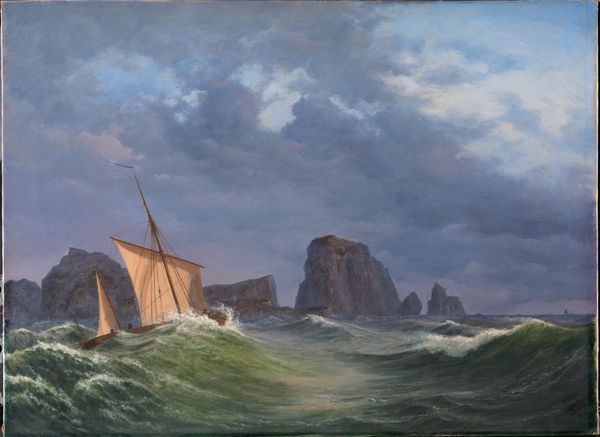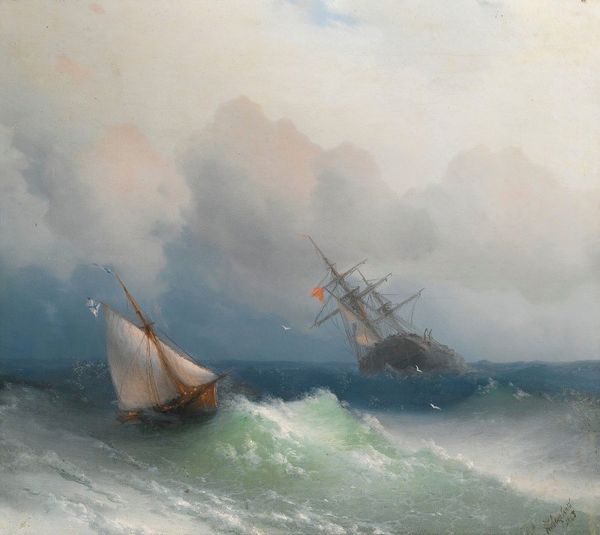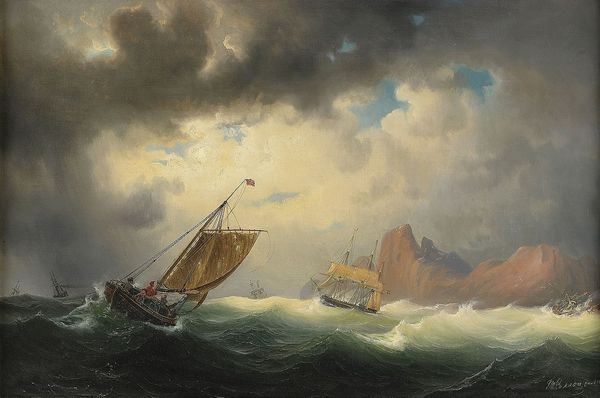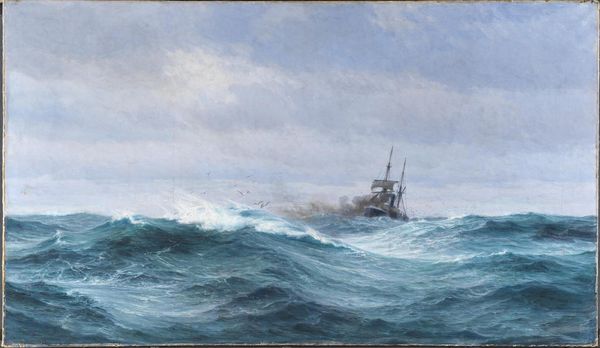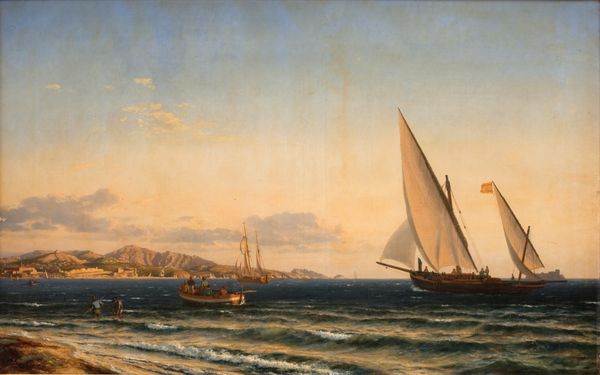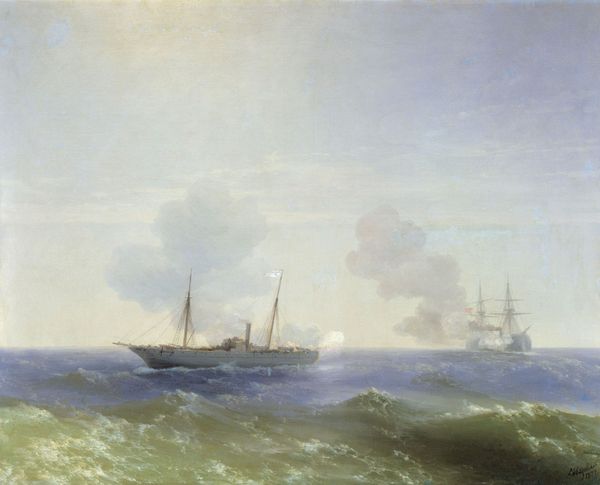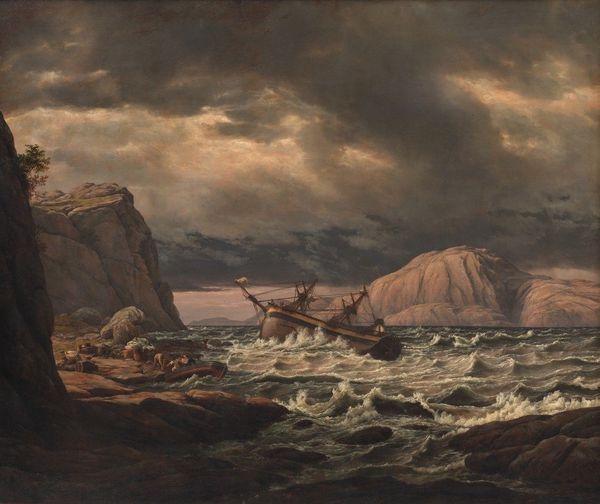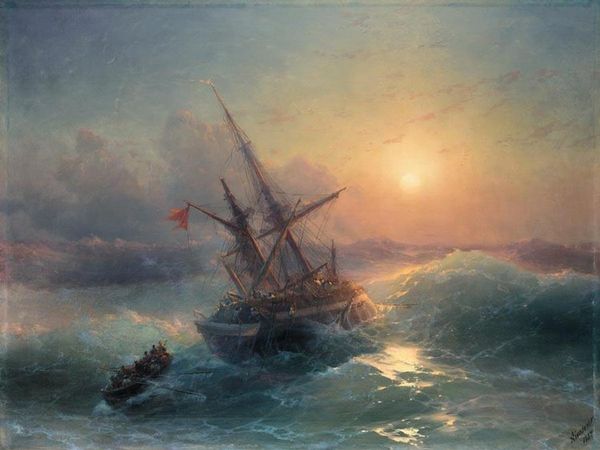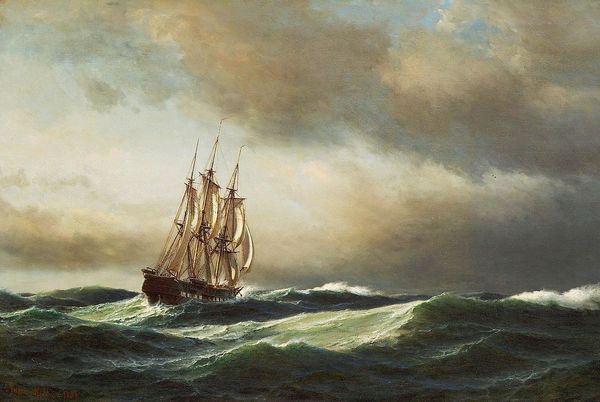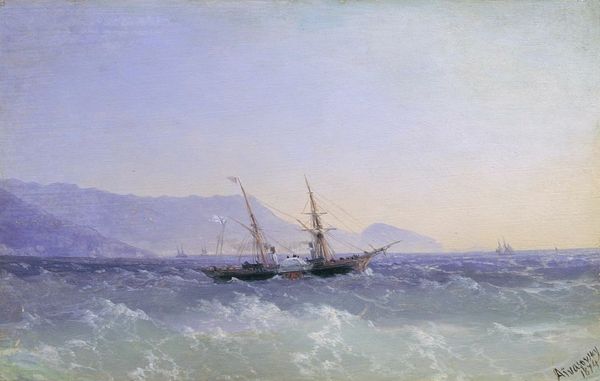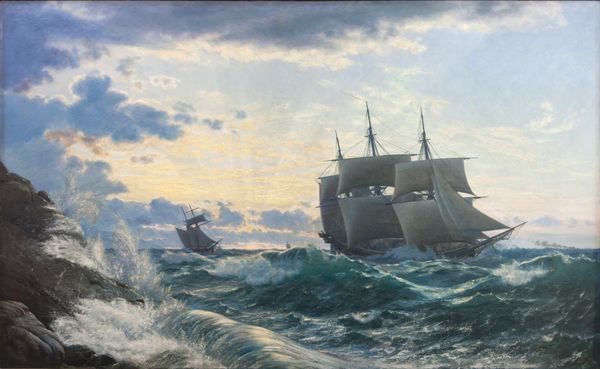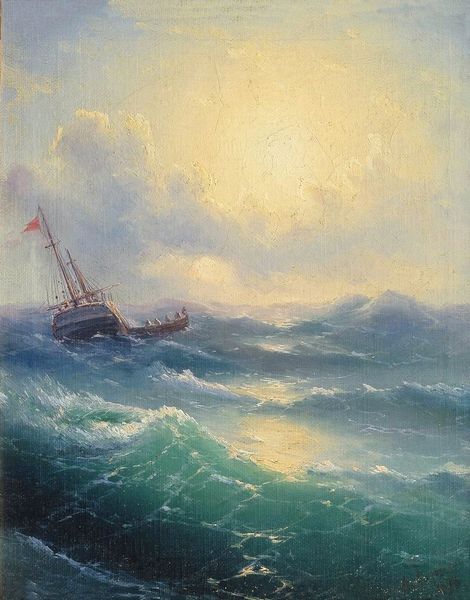
Panserskibet "Iver Hvitfeldt" passerer Forbjerget Stat på vejen til Trondhjem i sommeren 1893 1894
0:00
0:00
Dimensions: 157.5 cm (height) x 254 cm (width) (Netto)
Editor: So, here we have Christian Blache’s oil on canvas from 1894, titled "Panserskibet 'Iver Hvitfeldt' passerer Forbjerget Stat p\u00e5 vejen til Trondhjem i sommeren 1893." The churning water really grabs my attention. It makes me think about the materials used, but what catches your eye? Curator: What I find compelling is the relationship between industrial production and plein air painting. The battleship, itself a product of intense industrial labour, is depicted in this supposedly naturalistic setting. How does Blache reconcile these two very different kinds of production and labour? Editor: That's an interesting point. I hadn't considered the contrast in how each were ‘made.’ What’s the connection to labor, specifically? Curator: Think about it. The ship represents a massive undertaking, with countless workers extracting and shaping raw materials, constructing and assembling components, fuelled by coal. The painting, on the other hand, looks deceptively simple and spontaneous. It's "en plein air," yes, but that's a carefully constructed illusion obscuring Blache’s artistic labour, the cost of canvas, paint pigments... a very different process. Editor: So, the value of each depends on its means of production? The painting, as an artwork, masks all of its hard labor in order to be beautiful? Curator: Precisely. And this creates a fascinating tension. Both the ship and the painting represent forms of national power and identity, albeit through different modes of material production and representation. But only one conceals those modes effectively! How are we meant to value these works if we do not understand labor? Editor: Wow, I will never look at a seascape the same way. Thanks for revealing this social commentary by way of materiality. Curator: My pleasure! It makes you consider not just *what* we see, but how the artist made it all visible.
Comments
No comments
Be the first to comment and join the conversation on the ultimate creative platform.
